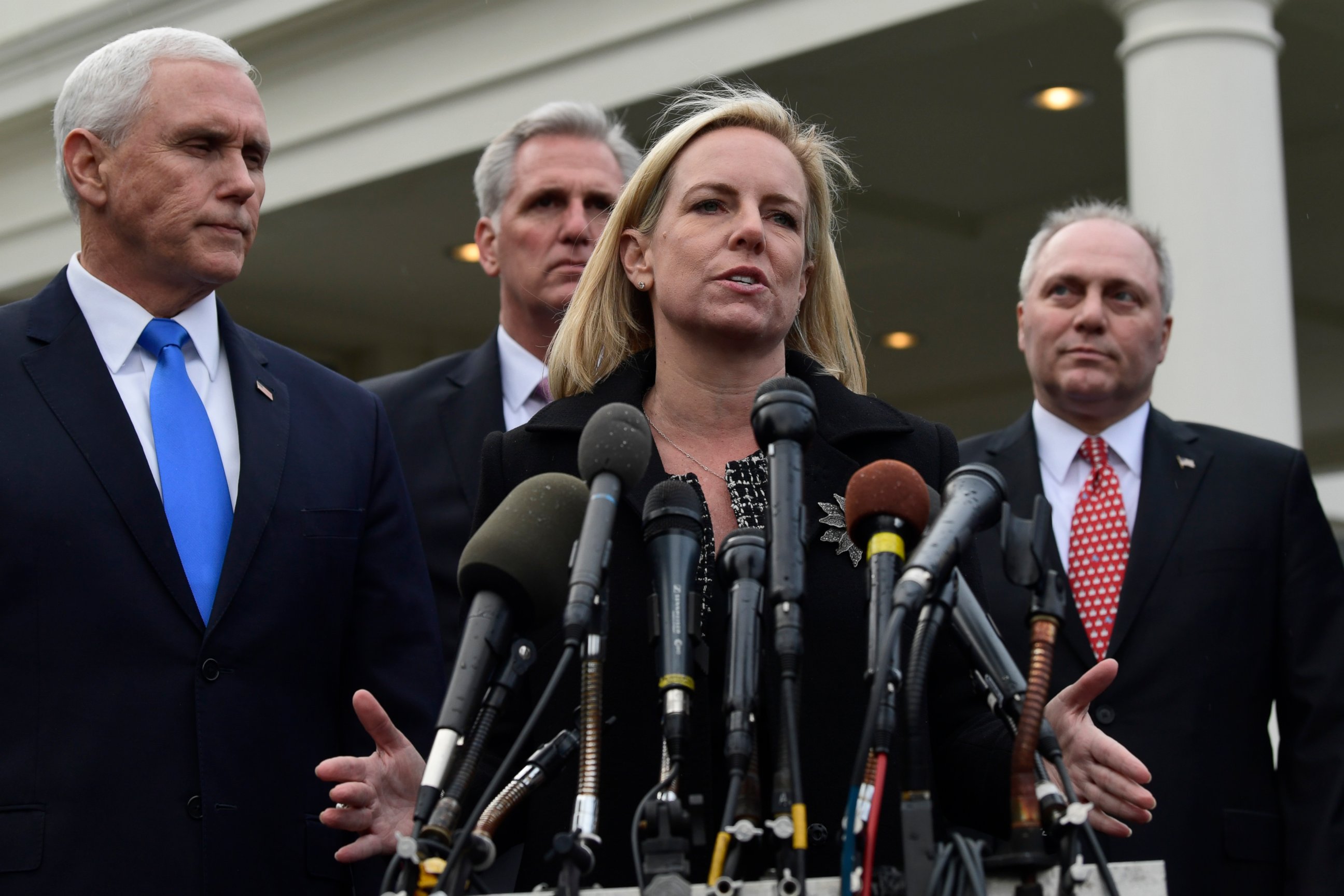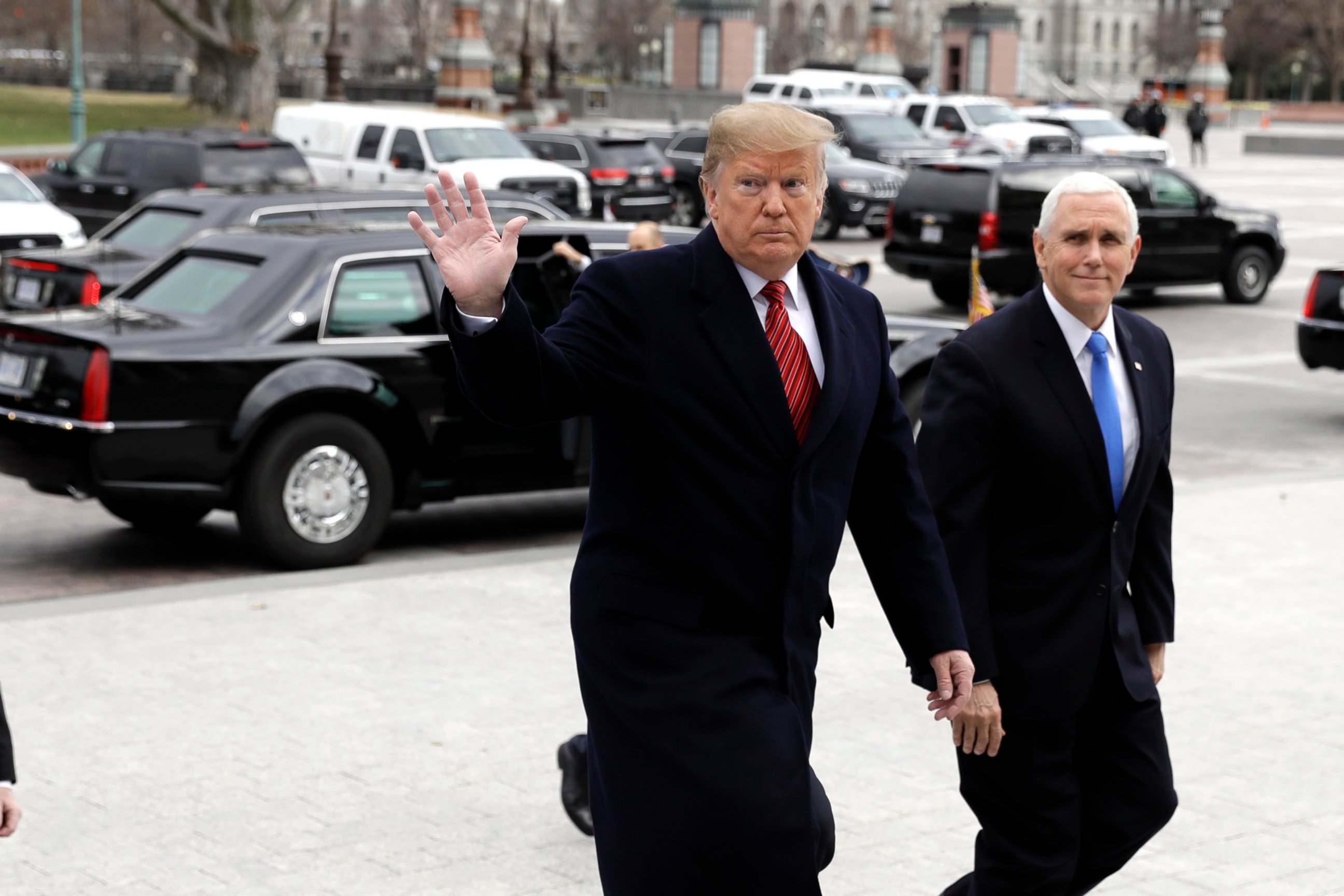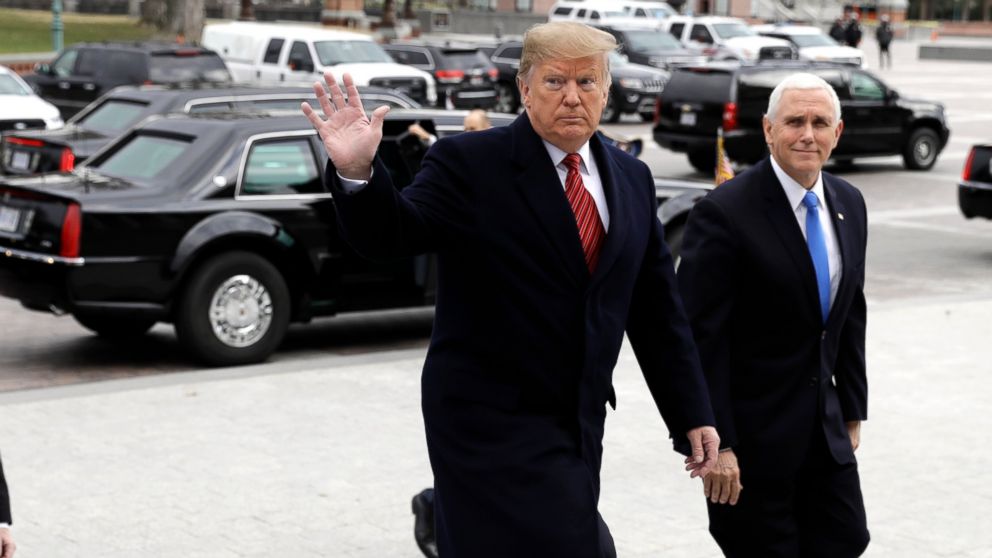Trump, GOP blamed for shutdown; no crisis seen but fewer oppose wall (POLL)
A majority of Americans hold Donald Trump and congressional Republicans mainly responsible for the partial federal shutdown, now the longest in history, according to a new ABC News/Washington Post poll.
Only a quarter back Trump’s claim that there’s a crisis at the southern border and two-thirds oppose him declaring a national emergency to fund a wall there, according to the poll.
At the same time, support for a border wall has increased since the last time border security issues forced the parties into a standoff in January 2018.
Forty-two percent now support a wall, the highest percentage in ABC/Post polling since Trump first proposed it. Fifty-four percent are opposed.
See PDF for full results, charts, and tables.
Fifty-three percent in the national survey said that Trump and the GOP are mainly responsible for the shutdown, while 29 percent blamed congressional Democrats, nearly a 2-1 margin against the president and his party. Thirteen percent said both equally are at fault. (Slightly fewer, 48 percent, blamed Trump and his party during the brief partial shutdown a year ago.)
Responsibility is assigned largely along party lines. But while 85 percent of Democrats and 78 percent of liberals mainly blamed Trump and the GOP for the partial shutdown, fewer Republicans (68 percent) or conservatives (50 percent) mainly blamed the Democrats in Congress. A third of conservatives said Trump and the congressional Republicans are at fault.

Only 18 percent in this poll, produced for ABC by Langer Research Associates, said they’ve personally been affected by the partial shutdown. But 79 percent said it would be a serious problem or a crisis if it were to continue for months.
A wide majority of Americans rejected the claim at the heart of Trump’s address to the nation last week: Just 24 percent thought that the immigration situation at the border is at a crisis level. Even among supporters of a border wall, a less-than-overwhelming 46 percent see a crisis, along with just 9 percent of wall opponents. Still, about half in both groups said it’s a serious problem, though not a crisis (48 percent of wall supporters, 47 percent of wall opponents).
As noted, while more still oppose rather than back a wall, support has increased to 42 percent, up from 34 percent a year ago and a previous high of 37 percent in 2017. Opposition, 54 percent, is down from 63 percent a year ago and a previous low of 60 percent two years ago.
These shifts have occurred chiefly among Republicans, whose support for the wall has gained 16 percentage points versus one year ago: +10 points among conservatives and +11 among .
“Strong” opposition also has declined, from 52 percent last January to 38 percent now. That still outpaces strong support, 29 percent.
Notably among groups, whites support a wall by a slight 54-44 percent. Nonwhites oppose it, 22-72 percent. Support among whites is +10 points vs. a year ago.
Despite higher support for the wall, 66 percent oppose Trump using emergency powers to get it built. Half strongly oppose this course, double the number who strongly support it. Notably, use of emergency powers is backed by majorities in only a few Trump-friendly groups, including Republicans and strong conservatives – both of whom are for it by 30-point margins or more.

By comparison, nine in 10 Democrats and liberals are in opposition, as are seven in 10 independents and moderates. And those who are only somewhat conservative diverge from those who are very conservative, 44 percent supporting vs. 69 percent.
In terms of outside partisans, though support is low across the board, it drops particularly among Americans younger than 40 (15 percent) and non-whites (16 percent), compared with four in 10 of their older and white counterparts alike.
As noted, 18 percent have been inconvenienced by the partial shutdown, with 7 percent reporting major inconvenience. That falls between the other major partial shutdowns: By the end of the 2013 shutdown, 22 percent said they had been inconvenienced by it, vs. 12 percent in the 1995-1996 episode.
Regardless of personal inconvenience, 38 percent say it would be a crisis if the shutdown were to continue for several months, and an additional 41 percent said it’d be a serious problem.
Compromise?
About four in 10 wall supporters and opponents alike want their side to compromise to end the shutdown, even if that means being flexible with their demands.
People who oppose the wall divide on whether the Democrats in Congress should continue to refuse funding even if it extends the shutdown, or should compromise to end it, 50-45 percent. On the other side, among those who support the wall, 57 percent favor Trump continuing to demand wall funding, while 39 percent say compromise is the way to go. On a net basis, this means that 24 percent of Americans both support the wall and want Trump to go to the mat for it; 27 percent both oppose it and say the Democrats in Congress should stick to their guns.
Those who have strong sentiments on the issue, naturally, are less apt to favor compromise.

Beyond the groups cited above, there’s been a 13-point increase in support for the wall among college graduates, now 43 percent. That compares with no significant change among Democrats and most Democratic-leaning groups, including young adults, liberals and nonwhites.
By contrast, the decline in strong opposition to the wall came across groups. Notably, moderates and 18- to 29-year-olds saw the largest drops, of 24 points each, as well as independents, 20 points down.
At the same time, as mentioned, Trump has majority backing for declaring a national emergency to get the wall built only in his base. Among others, his position’s far underwater.
Methodology
This ABC News/Washington Post poll was conducted by landline and cellular telephone Jan. 8-11, 2019, in English and Spanish, among a random national sample of 788 adults. Results have a margin of sampling error of 4.5 points, including the design effect. Partisan divisions are 31-26-39 percent, Democrats-Republicans-independents.
The survey was produced for ABC News by Langer Research Associates of New York, with sampling, data collection and tabulation by SSRS of Glen Mills, Pennsylvania. See details on the survey’s methodology here.




